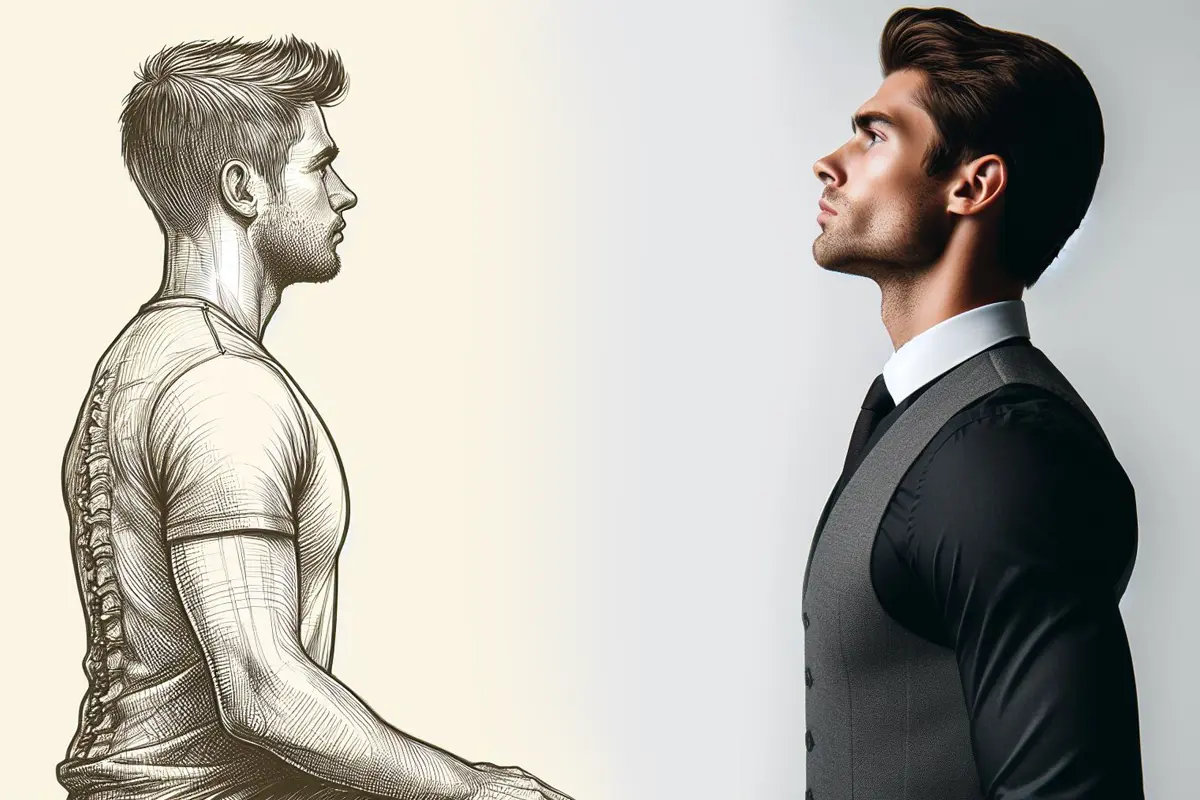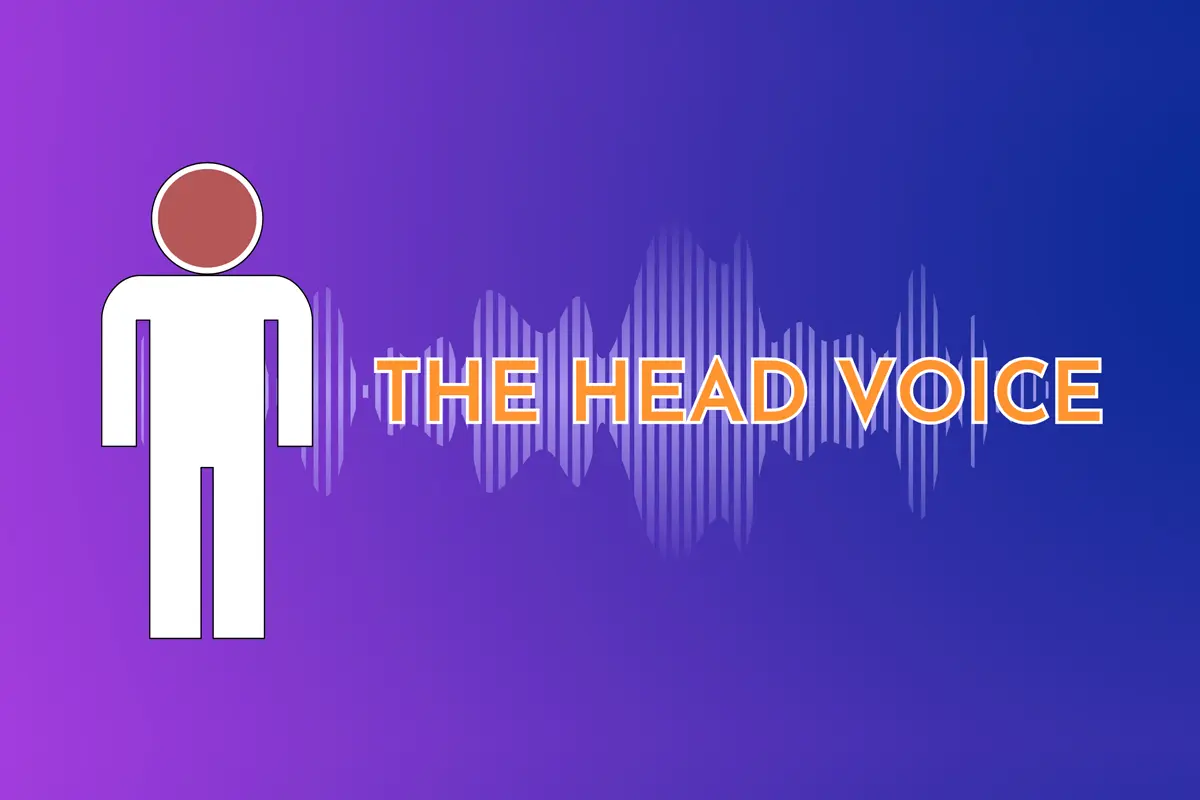Many beginners mistakenly believe that singing revolves solely around managing their vocal cords.
But the truth is, it’s about using your whole body effectively.
Proper posture lays the basis for excellent singing technique. It ensures you control your breath, produce resonant tones, and deliver extraordinary performances.
Throughout my extensive career, I’ve seen how improving posture can bring singer’s abilities “up-front”.
In this post, we’ll break down the best posture for singing and get the most ideal alignment.
We’ll explain how each part provides to your overall posture and technique.
We’ll also highlight the benefits of maintaining good posture, such as better breath support and avoiding vocal strain.
We’ll discuss whether it’s better to sing while sitting or standing, considering factors like personal preference and performance settings.
From simple tips for improving your posture to incorporating posture awareness into your vocal practice, this post will give you the tools to develop a strong singing posture.
So, let’s dive in and find out why a good posture can take your singing to the next level.
Understanding Ideal Alignment
As we dig into the concept of ideal alignment for singing, it’s required to grasp the basic elements that contribute to optimal posture.
Years ago, when I first started singing, I struggled with breath control and vocal strain, despite diligently practicing vocal exercises. It wasn’t until my coach emphasized the importance of posture that everything clicked into place.
One day, as I stood in front of the mirror, I noticed how my slouched posture was hindering my ability to take deep breaths and project my voice. With his help, I learned to align my head, shoulders, spine, and pelvis, creating a solid foundation for my voice.
Now, let’s break down each of these components:
- Head and Neck Alignment:
Begin by ensuring your head is balanced and aligned with your neck and spine. Avoid jutting your chin forward or tucking it in too much.
Instead, imagine a string gently pulling you upward from the crown of your head, elongating your neck, and maintaining proper alignment.
- Shoulder Relaxation:
Next, focus on relaxing your shoulders and allowing them to fall naturally back and down.
Tension in the shoulders can restrict breath support and lead to vocal strain.
Practice rolling your shoulders gently backward to release any tension and promote relaxation.
- Spine Alignment:
Your spine should remain straight and aligned from the base of your neck to your tailbone.
Avoid slouching or arching your back excessively, as this can interfere with proper breath support and vocal resonance.
Engage your core muscles slightly to support your spine and maintain alignment.
- Ribcage Expansion:
Lift your rib cage slightly while maintaining a relaxed and expanded feeling in your torso.
This allows for optimal lung expansion and breath control while singing.
Visualize your ribcage opening like a balloon as you inhale, allowing for full expansion of your lungs.
- Abdominal Engagement:
Engage your abdominal muscles gently to support your breath and stabilize your singing.
Avoid pushing out or sucking in your stomach too forcefully, as this can interfere with proper breath control.
Practice breathing deeply into your lower abdomen to strengthen these muscles.
- Pelvic Alignment:
Keep your pelvis neutral and aligned with your spine.
Avoid tilting your pelvis too far forward or backward, as this can affect the alignment of your spine and hinder breath support.
Stand or sit with your pelvis in a comfortable, balanced position to support your singing posture.
- Feet Position and Stability:
Ensure your feet are shoulder-width apart and evenly balanced on the ground.
Distribute your weight evenly between both feet to maintain stability and support your posture. Avoid locking your knees; keep them slightly bent to promote relaxation and flexibility.
Understanding and implementing these elements of ideal alignment will lay the foundation for proper singing posture.
Focusing on each component and combining them into your singing practice can optimize your vocal technique and increase your potential as a singer.
Benefits of Good Posture

Maintaining good posture while singing offers many benefits that directly impact your vocal performance and overall well-being.
Let’s explore some of the significant advantages of adopting proper posture:
- Enhanced Breath Control and Support:
Good posture allows for optimal lung expansion and diaphragmatic breathing, which are essential for efficient breath control while singing.
Maintaining proper alignment allows you to access your lungs’ total capacity and support your voice with a steady airflow.
- Improved Vocal Resonance and Projection:
Proper posture optimize vocal resonance, allowing your voice to resonate freely in your chest, throat, and head cavities.
This results in a richer, fuller sound with greater clarity and projection.
By aligning your body correctly, you can amplify the natural resonance of your voice and achieve a more great vocal presence.
- Prevention of Strain and Injury:
Maintaining good posture reduces strain on the vocal cords and surrounding muscles, minimizing the risk of vocal fatigue, hoarseness, and injury.
Avoiding excessive tension and strain can preserve the health and longevity of your voice, allowing for consistent and sustainable vocal performance.
- Increased Performance Confidence and Stage Presence:
Good posture contributes to a confident and commanding stage presence, refining your overall performance charisma and connection with the audience.
Standing or sitting tall with poise and grace radiate confidence and professionalism, engaging listeners with your presence and voice.
No matter you are singing on stage, in the studio, or in the comfort of your home, maintaining proper alignment is necessary for reaching your full vocal potential.
Sitting vs. Standing: Considerations

Various factors such as: personal preference, performance context, and the nature of the music being performed, are often persuading the decision between sitting and standing.
Here are the advantages and disadvantages of each option to help you make an informed decision:
Advantages of Singing While Sitting:
- Stability: Sitting can provide a sense of stability, allowing singers to feel grounded and centered while performing. This can be particularly beneficial for singers who struggle with balance or mobility issues.
- Comfort: Some singers find it more comfortable to sing while seated, especially during longer rehearsal sessions or performances. Sitting allows for relaxation of the legs and feet, reducing fatigue and discomfort.
- Control: Sitting can help singers better control their posture and body movements, as they are less likely to unintentionally sway or shift their weight.
Disadvantages of Singing While Sitting:
- Restricted Movement: Sitting limits the range of motion compared to standing, which may hinder expressive gestures or physical engagement with the music.
- Breath Support: While sitting, singers may find it harder to fully engage their diaphragm and support their breath, resulting in decreased vocal power and projection.
- Visibility: In some performance settings, sitting may make it more difficult for the audience to see the singer clearly, especially in larger venues or stages with elevated seating.
Advantages of Singing While Standing:
- Freedom of Movement: Standing allows for greater freedom of movement, enabling singers to express themselves physically and engage dynamically with the music.
- Diaphragmatic Engagement: Standing encourages better diaphragmatic breathing and complete expansion of the lungs, facilitating stronger breath support and vocal projection.
- Stage Presence: Standing conveys a sense of energy and presence, enhancing the singer’s stage presence and connection with the audience.
Disadvantages of Singing While Standing:
- Fatigue: Standing for extended periods can lead to physical fatigue, especially if proper posture is not maintained. This can affect vocal performance and overall endurance.
- Balance and Stability: Some singers may struggle with balance or stability while standing, particularly if they have mobility issues or perform on uneven surfaces.
- Performance Anxiety: Standing can amplify feelings of nervousness or anxiety, as singers may feel more exposed or vulnerable without the support of a chair or stool.
Ultimately, the decision to sing while sitting or standing depends on individual preferences and the specific requirements of each performance.
Experimenting with both options and considering the advantages and disadvantages outlined above can help singers find the best approach in different contexts.
Practical Tips for Achieving Good Posture
Maintaining good posture while singing requires practice and awareness. Here are some practical tips to help you improve your posture:
Visualization Techniques:
Let me share a personal story that illustrates the effectiveness of visualization techniques in improving posture.
I still remember the struggle I faced with maintaining proper posture during my early days as a singer. No matter how hard I tried, I couldn’t seem to shake off the habit of slouching or tensing up my shoulders while performing. It wasn’t until I discovered the power of visualization that I began to see a significant improvement.
One day, during a particularly challenging rehearsal, my vocal coach introduced me to a simple visualization exercise. He asked me to imagine myself as a marionette, with strings attached to the top of my head, gently pulling me upward. As I closed my eyes and visualized this image, I felt an instant shift in my posture. My spine straightened, my shoulders relaxed, and I felt more grounded and centered than ever before.
From that moment on, I included visualization into my daily practice routine. Before every performance or rehearsal, I would take a few moments to visualize myself standing tall and confident, with perfect alignment from head to toe. Not only did this help me improve my posture, but it also increased my confidence and stage presence.
So, if you find yourself struggling with maintaining good posture while singing, I encourage you to give visualization a try. Close your eyes, picture yourself as a marionette, and feel the strings gently pulling you upward. You’ll be amazed at the difference it can make in your singing technique and overall performance.
Relaxation Exercises:
Include relaxation exercises into your warm-up routine to release muscle tension and promote better posture. Practice shoulder rolls, neck stretches, and deep breathing exercises to loosen tight muscles and improve overall body awareness.
Posture-Check Reminders:
Set reminders during practice sessions to check your posture regularly. Use visual or auditory cues, such as placing a mirror in front of you or setting a timer to remind you to adjust your posture if necessary.
Physical Activity:
Regular physical activity strengthens your core muscles and improves overall body alignment. Activities like yoga, Pilates, or tai chi can help enhance flexibility, balance, and posture awareness, benefiting your singing technique.
Body Awareness Training:
Practice mindfulness and body awareness techniques to tune into subtle sensations and cues from your body while singing. Pay attention to areas of tension or discomfort and adjust your posture accordingly to ease strain and promote relaxation.
Combining Posture into Vocal Practice

Combining posture awareness into your vocal practice sessions is essential for reinforcing good habits and optimizing your singing technique. Here are some strategies to help you combine posture into your daily vocal exercises:
- Warm-up Exercises: Begin each practice session with gentle warm-up exercises focusing on posture awareness. Start by standing or sitting tall with relaxed shoulders, and take a few deep breaths to center yourself. Then, gradually engage your core muscles as you perform vocal warm-ups, paying close attention to maintaining proper alignment.
- Vocal Exercises: Choose vocal exercises targeting posture and alignment. For example, practice singing scales or arpeggios while focusing on keeping your spine straight, shoulders relaxed, and abdomen engaged. Experiment with different vocal exercises to find those that help you maintain optimal singing posture.
- Posture Checks: Incorporate posture checks into your rehearsal routines to ensure that you’re maintaining proper alignment while singing. Periodically pause during practice sessions to assess your posture and make any necessary adjustments to improve alignment and relaxation. Use mirrors or video recordings to monitor your posture and progress over time.
- Mindfulness Techniques: Practice mindfulness techniques to deepen your awareness of your body and its alignment while singing. Notice how different postures affect your breath control, vocal resonance, and overall vocal performance. Mindful breathing exercises, meditation, and body scanning techniques can all help you develop a deeper connection with your body and its alignment.
- Consistency and Persistence: Remember that developing good posture habits takes time and consistent effort. Be patient with yourself as you integrate posture awareness into your vocal practice routine.
Stay committed to regular practice and focus on making gradual gains each day. With time and dedication, you’ll have a strong and resilient singing posture that lifts your vocal performance and allows you to express yourself confidently.
Seeking Professional Guidance
While self-practice is good, seeking professional guidance from a vocal coach or instructor can significantly boost your progress in improving posture and vocal technique.
Working with a vocal coach provides personalized feedback fitted to your specific needs and goals.
They can assess your posture, technique, and overall vocal performance, identifying areas for improvement and offering targeted guidance.
They can prescribe specific exercises and drills designed to improve posture, breath control, and vocal resonance, providing hands-on guidance to ensure you are performing exercises correctly.
Beyond technical instruction, working with a vocal coach offers accountability, motivation, and support to help you get past challenges and stay consistent with your practice.
Conclusion
In my years of teaching, I’ve seen countless singers evolve their voices by focusing on a good posture. But perhaps the most profound transformation I witnessed was in a student named Sarah.
Sarah came to me with a passion for singing but struggled with confidence and self-expression. Her posture mirrored her lack of belief in her abilities – slouched shoulders, a timid stance, and a voice that seemed to falter with each note.
But as we worked together, something incredible happened. Through gentle guidance and encouragement, Sarah began to find her voice – not just in a physical sense, but in a deeper, more profound way. As her posture improved, so did her confidence. She stood a little taller, spoke a little louder, and sang with a newfound sense of power and conviction.
I’ll never forget the moment when Sarah stepped onto the stage for her first solo performance. With her head held high and her heart open wide, she delivered a performance that moved everyone in the audience to tears. It was a testament to the transformative power of good posture and the unwavering belief in oneself.
So, No matter if you are beginners or professionals, having a good posture is a step towards reaching your singing goals. Now, are you ready to stand tall, breathe deeply, and let your voice “ROAR”?
Who knows? You may just discover a strength and beauty within yourself that you never knew existed.





